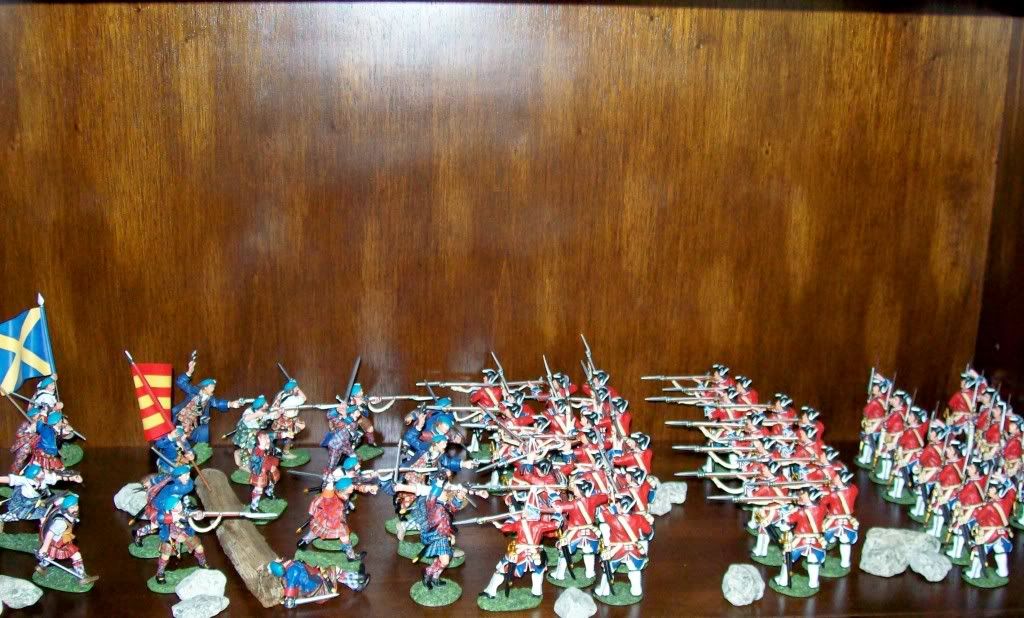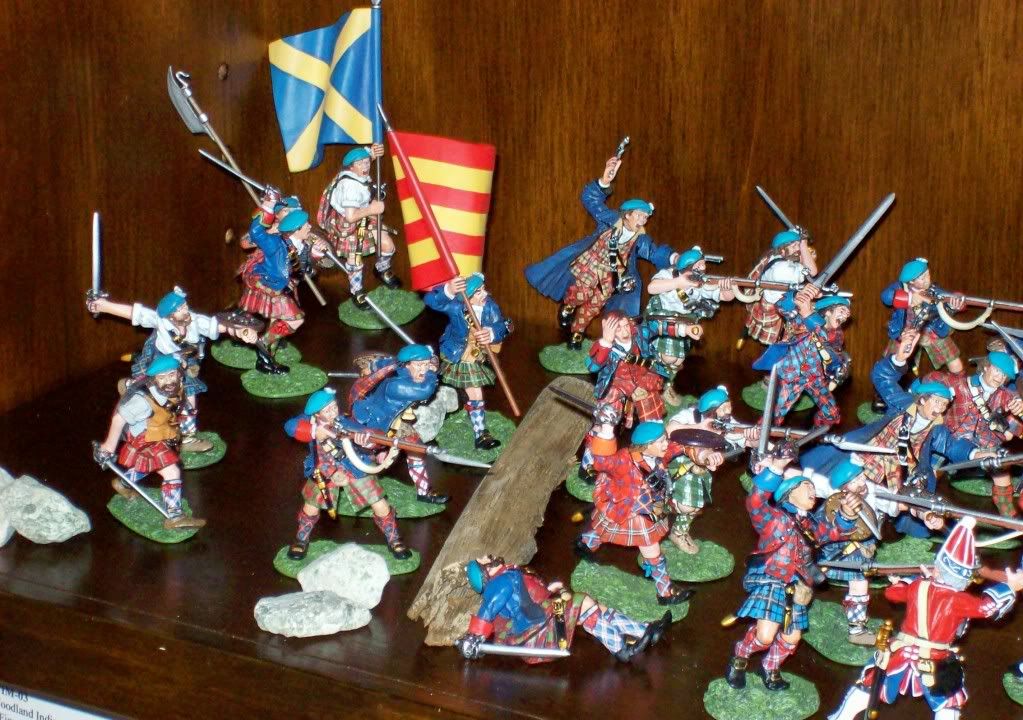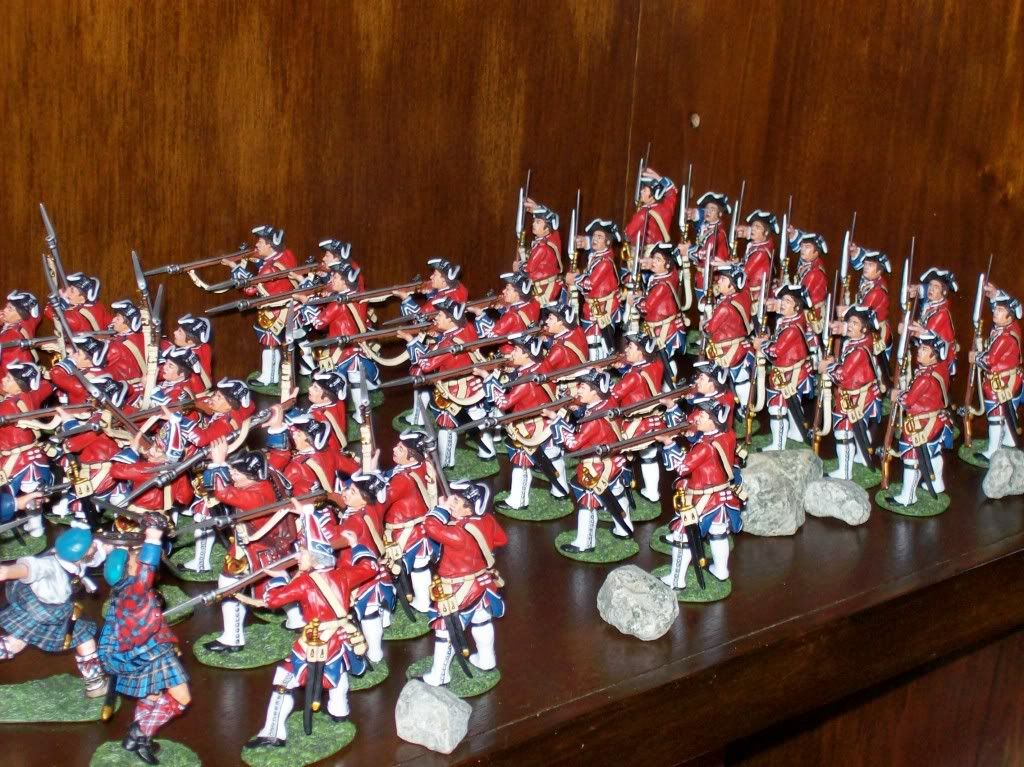mikemiller1955
Lieutenant General
- Joined
- Aug 3, 2008
- Messages
- 17,619
The Highlanders’ Charge was a fearsome spectacle; crowds of clansmen running at top speed with broadswords, target shields and dirks, yelling their clan war cries.
The spectacle of Highlanders charging through the early mist making "wild Highland war cries and with the bloodcurdling skirl of the bag pipes often caused mass panic for even the well disciplined troops of the British army.
The charge was a battlefield tactic used by the clans of the Scottish Highlands in the 17th and 18th century.
It was developed as a response to the evolution of firearms.
Previously, Highlanders had fought in tight formations, led by a heavily armoured warrior elite, that carried heavy battle-axes or two-handed broadswords known as claidheamh mor or "claymores" – meaning "great sword" in Scottish Gaelic.
However, with the widespread use of muskets and cannon, such formations became vulnerable. As a result, in the 17th century, Highlanders developed a lighter, one-handed claymore with a basket hilt that protected the hand. This was generally used with a shield or "targe" strapped to the body and a "dirk" or biotag (long knife) held in the other hand. The use of the charge greatly mimicked the Celtic fighting styles of battle, where one side would rush at the other in an attempt to break the line of battle.
From the 1640s onwards, Highlanders in battle would launch rapid charges, firing their own muskets at close range, before closing with their enemy hand to hand. This became known as the "Highland charge". Its advantage was that it allowed the Highlanders to cover the range of the enemy muskets quickly, before the enemy could inflict many casualties. The Highlanders could then exploit their skills in hand to hand fighting. In this way, they could overwhelm regular troops who were better armed and more conventionally trained.
In practice, the Highland charge proved so effective as much for its psychological impact as its physical one. Regular troops, when faced with a tide of screaming Highlanders, often lost their heads, fired off an un-aimed volley and began to run away. They would then face the charge not as a disciplined unit, but as a mass of panicked individuals, whom the Highlanders would cut down with impunity.
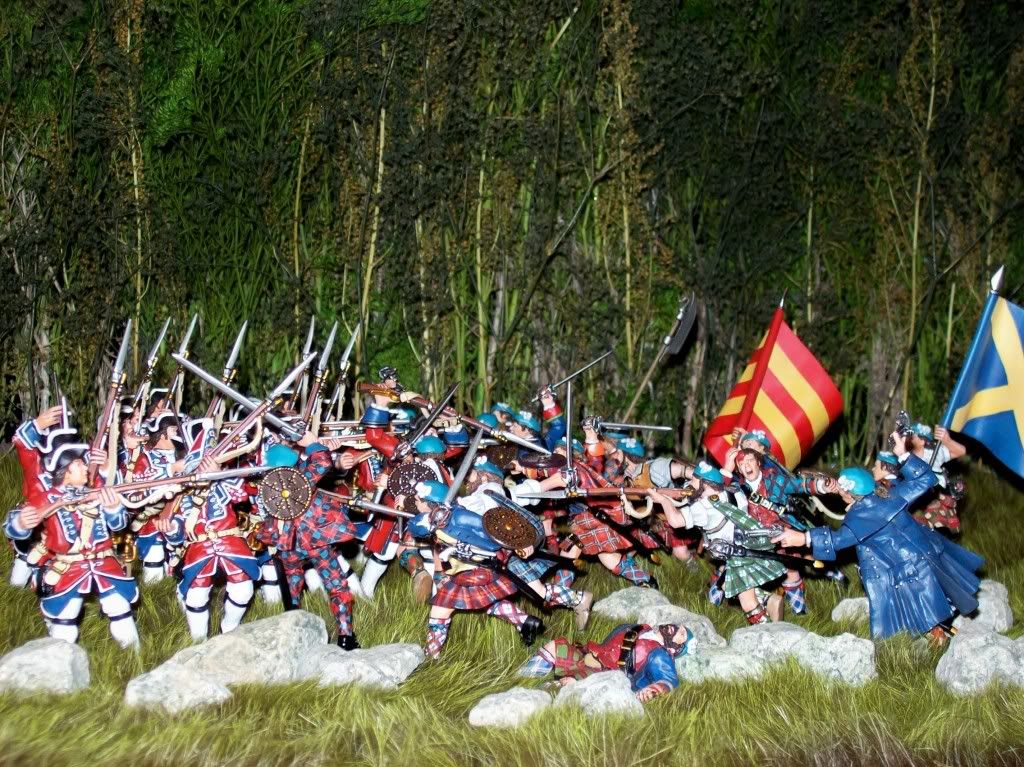

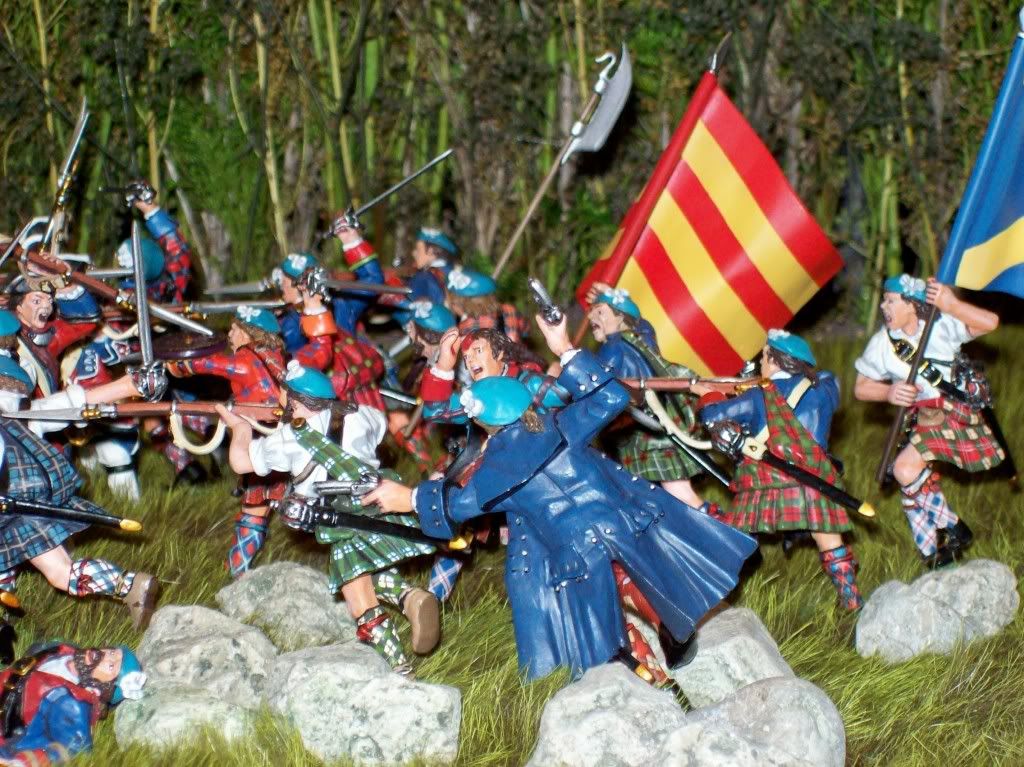
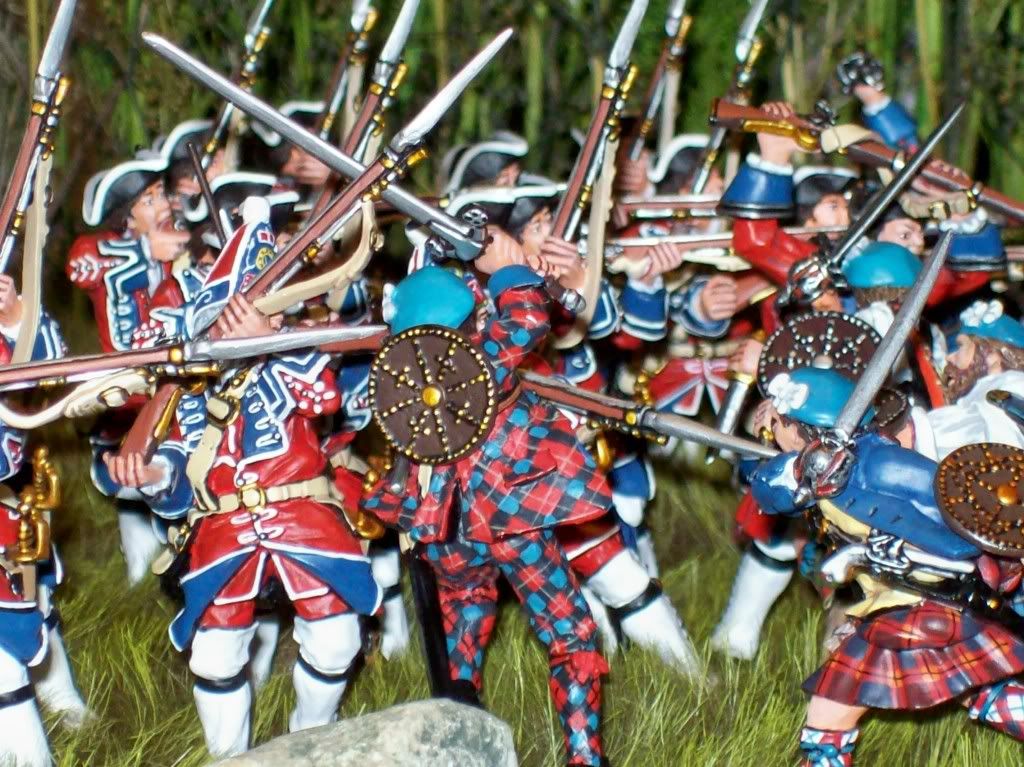
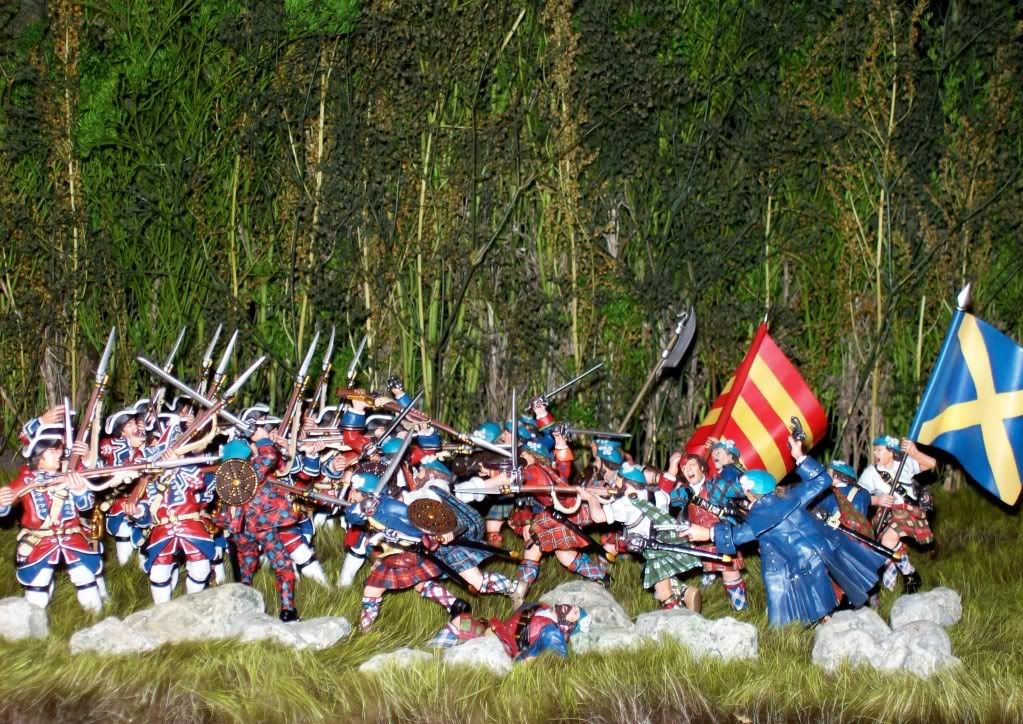
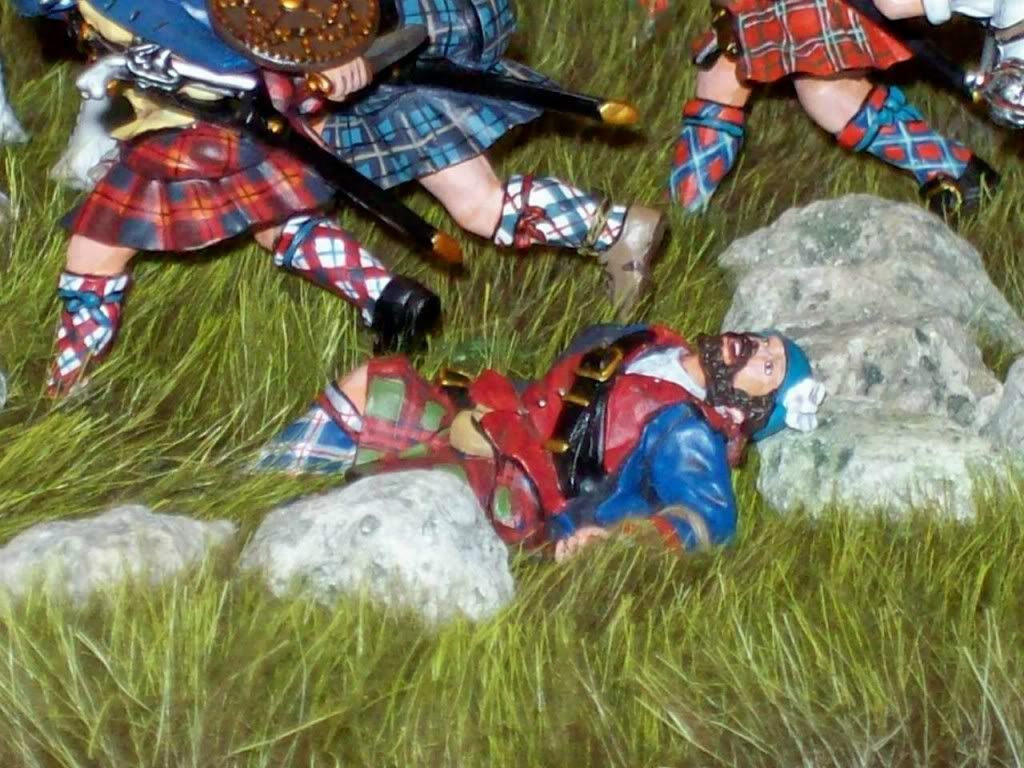
The spectacle of Highlanders charging through the early mist making "wild Highland war cries and with the bloodcurdling skirl of the bag pipes often caused mass panic for even the well disciplined troops of the British army.
The charge was a battlefield tactic used by the clans of the Scottish Highlands in the 17th and 18th century.
It was developed as a response to the evolution of firearms.
Previously, Highlanders had fought in tight formations, led by a heavily armoured warrior elite, that carried heavy battle-axes or two-handed broadswords known as claidheamh mor or "claymores" – meaning "great sword" in Scottish Gaelic.
However, with the widespread use of muskets and cannon, such formations became vulnerable. As a result, in the 17th century, Highlanders developed a lighter, one-handed claymore with a basket hilt that protected the hand. This was generally used with a shield or "targe" strapped to the body and a "dirk" or biotag (long knife) held in the other hand. The use of the charge greatly mimicked the Celtic fighting styles of battle, where one side would rush at the other in an attempt to break the line of battle.
From the 1640s onwards, Highlanders in battle would launch rapid charges, firing their own muskets at close range, before closing with their enemy hand to hand. This became known as the "Highland charge". Its advantage was that it allowed the Highlanders to cover the range of the enemy muskets quickly, before the enemy could inflict many casualties. The Highlanders could then exploit their skills in hand to hand fighting. In this way, they could overwhelm regular troops who were better armed and more conventionally trained.
In practice, the Highland charge proved so effective as much for its psychological impact as its physical one. Regular troops, when faced with a tide of screaming Highlanders, often lost their heads, fired off an un-aimed volley and began to run away. They would then face the charge not as a disciplined unit, but as a mass of panicked individuals, whom the Highlanders would cut down with impunity.








